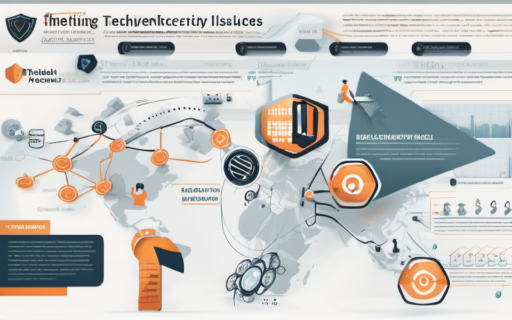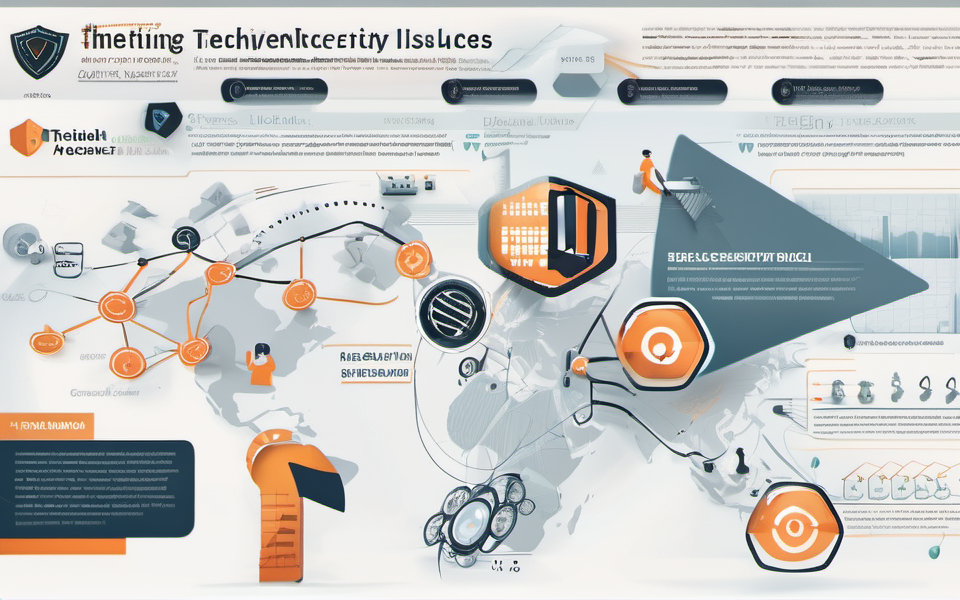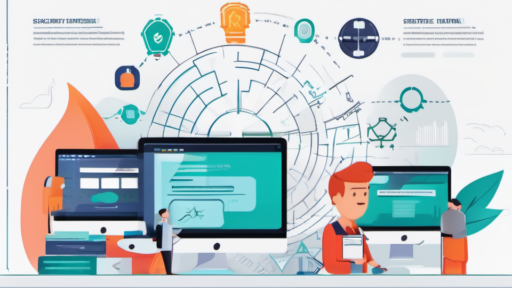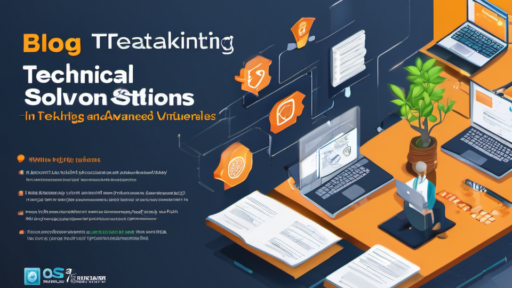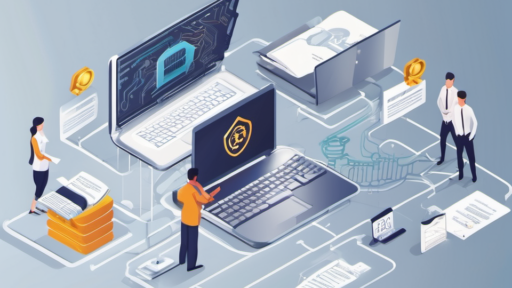Tired of Hackers Stealing Your Data? This Secret Strategy is the Only Way to Stay Secure in the Digital Age!
Imagine this: You’re minding your own business, scrolling through social media, when a notification pops up. Your bank account has been drained! Or maybe, your precious family photos and memories have vanished, replaced by a sinister ransom message. These nightmare scenarios are all too common in our modern world, where cybersecurity threats are becoming more sophisticated by the day. But fear not, brave digital explorer, because this isn’t just another scary story! This article is your roadmap to surviving, thriving, and dominating the ever-changing landscape of digital security.
Understanding the Shifting Sands of Cybersecurity Threats
The cybercriminal underworld is constantly evolving, fueled by ever-changing malware, ransomware, and phishing tactics. Just when you think you’ve mastered the latest defenses, they come up with a new strategy, like a chameleon adapting to its surroundings.
The Rise of Sophisticated Cyberattacks
One of the biggest challenges facing organizations and individuals alike is the rise of highly sophisticated cyberattacks. Remember the days when simple password cracking was the biggest worry? Gone are those days! Now, we’re facing a whole new generation of attacks. Here’s a look at some of the most common, and most terrifying:
- Zero-day exploits: These are vulnerabilities in software that are previously unknown, meaning there’s no patch or fix yet. Imagine your house with an unlocked window; it’s wide open for the taking!
- Advanced Persistent Threats (APTs): This isn’t a single attack, it’s a persistent and coordinated campaign that targets specific individuals or organizations over a long period. It’s like a determined spy trying to infiltrate a high-security facility, relentlessly looking for weaknesses.
- Social Engineering: Don’t be fooled by the name, this is seriously dangerous. Attackers use psychological tactics to manipulate people into revealing sensitive information, often by impersonating a trusted person or company.
Beyond Malware and Phishing: New Challenges Emerge
The world of cybersecurity is a dynamic battlefield, and new threats are constantly emerging. We can no longer focus only on the “usual suspects.” Here are some fresh adversaries you need to know about:
- The Rise of the IoT (Internet of Things): As we connect more devices, from smart homes to medical equipment, we create more potential attack vectors. Imagine a hacker controlling your home security system or messing with your pace maker!
- The Dark Web and Cryptocurrency: The anonymous nature of the Dark Web and cryptocurrencies provide havens for cybercriminals. They can conduct illicit transactions, recruit others for nefarious purposes, and escape detection more easily.
The Key to Cybersecurity in the Digital Age: Zero Trust
Gone are the days of blindly trusting everyone inside your network. The Zero Trust security model is the new way of thinking. It assumes that all users and devices are potentially hostile until proven otherwise, like a highly guarded castle that requires strict verification at every entry point.
Breaking Down Zero Trust Architecture
Imagine your digital life as a well-fortified fortress, with every wall, tower, and gate under constant scrutiny. Here’s how Zero Trust architecture plays out in real-world applications:
- Identity and Access Management (IAM): Every person or device needs to be strictly authenticated before gaining access, just like a unique fingerprint is required to open the castle gate.
- Continuous Verification: Instead of assuming trust once someone gets in, IAM verifies their legitimacy repeatedly, ensuring they still have the proper access and haven’t been compromised. It’s like the castle guards checking identification again and again to prevent impostors from entering.
- Least Privilege Principle: Users and devices are only granted access to the minimum information or resources they need, much like a medieval scribe only being allowed into the castle’s library to transcribe documents.
Benefits of Zero Trust for Individuals and Organizations:
For Organizations:
- Improved data security: Think of it as a robust chain with multiple locks, making it much harder for hackers to penetrate.
- Enhanced productivity: Eliminating needless access requests and approvals streamlines processes and allows employees to work more efficiently.
- Better regulatory compliance: It helps organizations meet strict cybersecurity regulations by proving robust controls and measures.
For Individuals:
- Secure personal devices: By implementing Zero Trust on your phone, computer, or tablet, you make it more difficult for attackers to steal sensitive information like bank details or passwords.
- Protected online identities: Your digital identity is safer as Zero Trust principles reinforce the barriers to phishing attacks and impersonations.
Cybersecurity Beyond Technology: Building a Secure Foundation
Technology is crucial, but cybersecurity requires a human element as well. Think of it like a fortress with sturdy walls, but also vigilant guards.
Embracing Cybersecurity Awareness and Training
You can have the best technology in the world, but without knowledgeable individuals, cybersecurity can falter. That’s why education and training are essential, just like teaching soldiers how to defend their fort.
- Phishing Detection: Learn how to identify fake emails or suspicious websites, like spotting enemy flags in disguise.
- Password Hygiene: Create strong and unique passwords for each of your accounts, like building strong fortifications for each access point.
- Social Media Security: Be mindful of what you share online and beware of malicious links and scams, as attackers often target vulnerable people through these platforms.
Cultivating a Cybersecurity Culture
Everyone needs to be invested in cybersecurity. This isn’t just the IT department’s responsibility. It’s about creating a mindset of vigilance and constant awareness.
- Leadership buy-in: Leaders need to champion cybersecurity initiatives, just like a general leading an army in times of war.
- Employee participation: Every individual plays a vital role. Encourage them to be proactive, report suspicious activities, and constantly strive for best practices.
- Constant education and awareness: Cybersecurity should be an ongoing process, not a one-time training session.
Embracing the Future of Cybersecurity : Artificial Intelligence to the Rescue!
As threats continue to evolve, cybersecurity needs to adapt. Artificial Intelligence (AI) is poised to revolutionize this field, just like knights were empowered by new weapons in ancient battles.
AI-Powered Cybersecurity Solutions
Imagine AI as your tireless digital watchdog, always vigilant against malicious attacks. Here are some exciting ways AI is transforming cybersecurity:
- Automated Threat Detection and Response: AI can rapidly analyze vast amounts of data and detect suspicious activity that would be impossible for humans to identify manually. Think of it as an army of virtual defenders scanning the landscape for signs of intrusion.
- Enhanced Security Analysis: AI algorithms can provide detailed insights and visualizations of network traffic, helping cybersecurity teams understand attack patterns and predict future threats, much like strategists planning for an upcoming campaign.
- Personalized Threat Prevention: AI can learn your unique behavior patterns and alert you to anomalies, proactively shielding your system from targeted attacks, just like a skilled warrior knowing the exact moves of an enemy.
The Challenges of Integrating AI in Cybersecurity
While promising, AI adoption is not without challenges.
- Data Privacy Concerns: The massive amounts of data needed to train AI models could raise concerns about individual privacy, demanding careful consideration and robust safeguards.
- Potential for Bias: Like any technology, AI algorithms are prone to bias if trained on flawed data. This needs to be addressed through ethical training and oversight to ensure fairness and prevent unintended discrimination.
Key Takeaways
The digital landscape is ever-changing and the threat to your online security is real. It’s more than just malware or phishing schemes; it’s about zero-day exploits, advanced persistent threats, and the emergence of vulnerabilities related to the Internet of Things and the Dark Web. The answer to this evolving challenge lies in adopting a Zero Trust approach and leveraging artificial intelligence. However, this journey demands more than just technology. A strong cybersecurity culture and continuous education are vital for staying ahead of the game.
Cybersecurity isn’t just a technical problem, it’s a human one. We all need to be aware, informed, and proactive in order to protect ourselves in this complex digital world. Let’s embrace the power of Zero Trust, artificial intelligence, and a robust cybersecurity culture. Together, we can navigate the ever-evolving cyber threats and build a more secure digital future for all.


